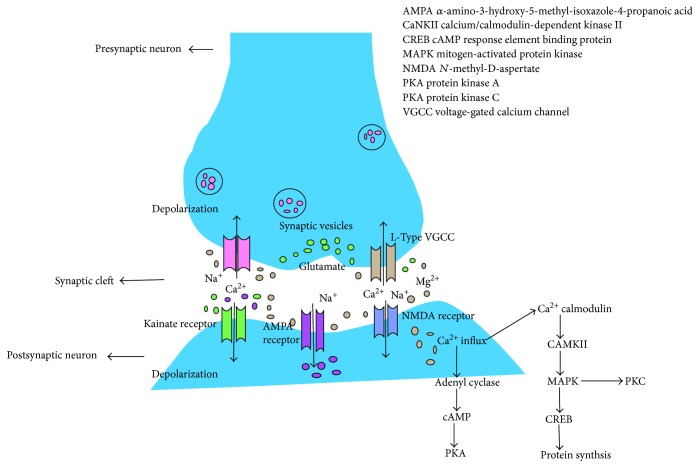Figure 1.
Transmission of signals through the synaptic junctions. Signals or impulses at the presynaptic terminal trigger the release of glutamate that binds to glutamate receptors at the postsynaptic membrane. Activation of α-amino-3-hydroxy-5-methyl-isoxazole-4-propanoic acid (AMPA) as well as kainate receptors which subsequently transport sodium ions that trigger postsynaptic depolarization. As membrane potential changes, it initiates the release of magnesium ions which blocks N-methyl-D-aspartate (NMDA) receptors. Influx of calcium via NMDA channels sets off a chain of events which establish long-term potentiation. Kainate receptors at the presynaptic end also seem to facilitate synaptic transmission at particular synapses by accumulating neurotransmitter release.

